Dreweatts announces Chinese Ceramics and Asian Works of Art Sale
Lot 164. Detail. A fine Chinese blue and white Transitional bottle vase, Chongzhen (1628-43). Estimate £10000–15000. Photo Dreweatts
NEWBURY.- The auction of Chinese Ceramics and Asian Works of Art will take place at Dreweatts, Donnington Priory, Newbury, Berkshire RG14 2JE and comprises an impressive selection of works of art from across the Asian continent including China, Japan, Tibet, India and Persia. Estimates range from £100 to £15,000.
Of special note is the collection of Iraqi architect Mohamed Makiya (1914 – 2015). Makiya was lauded as a master of incorporating traditional styles into modern architecture. His collection embraces the culture of the Middle East and the wider Islamic world. Born in Baghdad, Makiya came to Britain in 1935. He studied architecture and civil design at Liverpool University where he met his future wife Margaret Crawford, a student of History. By 1946 Makiya had been awarded a Ph.D from King’s College Cambridge, and had returned to his native Iraq where he established Makiya Associates. One of Dr Makiya’s most important commissions was the extension to the Khulafa Mosque in Baghdad, undertaken in 1960. The late 1980s saw a natural progression of the Makiyas’ interests, with the founding of the Kufa Gallery in London. This non-profit charity devoted to the promotion of the art and architecture of the Middle East would play an important role in promoting Iraqi and Arab culture in London.
One of the earliest objects in the collection is a 2nd-4thcentury grey schist figure of Buddha Shakyamuni from Gandhara (now northern Pakistan/Afghanistan). The Buddha is modelled standing with his left hand lowered and holds a section of his garment that is draped over both shoulders falling in symmetrical pleats. The face is serene with downcast eyes, below arched eyebrows and has elongated earlobes and a halo behind (Lot 319. Est: £4,000-6,000).
Lot 319. A grey schist figure of Buddha Shakyamuni, Gandhara Region, 2-4th Century. Estimate £4000–6000. Photo Dreweatts
with Buddha Shakyamuni modelled standing in samabhanga , his left hand is lowered and holds a section of his garment that is draped over both shoulders and falls in symmetrical pleats along his body, his face displays a serene expression with downcast eyes below arched eyebrows and elongated earlobes, with a halo behind, the figure approximately 58cm high. Right hand missing, half of halo missing and mounted on metal stand drilled into the uneven base of figure. Modern stand damaged to corners.
Compare with another standing Buddha illustrated, John Eskenazi, Art of Gandhara, 10-28th November 1998, p.32
Colourful ceramics from Persia include a 10th-century scraffito and splashed bowl of a stylised design in the typical T’ang colours of green and yellow giving it a fresh and contemporary look that would complement today’s interiors (Lot 386. Est: £500700).
Lot 386. A scaffito and splashed Bowl, North East Persia, 10th Century. Estimate £500–700. Photo Dreweatts
with flat base and conical form, the interior incised with stylised designs and glazed in typical T'ang glaze colours, diameter 19.1cms. Broken, repaired and restored
Provenance: The Mohamed Makiya Collection (1914-2015)
A 13th-century Kashan or Raqqa Bowl from Persia or Syria is a rare piece decorated with stylized flowers in black ink beneath a turquoise glaze (Lot 340. Est: £500-£700).
Lot 340. A Kashan or Raqqa Bowl, Persia or Syria, 13th Century. Estimate £500–700. Photo Dreweatts
resting on a narrow foot the flared bowl rises to vertical sides with a flanged lip, decorated in black beneath a turquoise glaze with stylised flowers, calligraphy and stripes, diameter 21.7cms. Much glaze degradation
Provenance: The Mohamed Makiya Collection (1914-2015)
The Mohamed Makiya Collection includes an exquisite selection of pictures and miniatures. Lot 311 features a scene from the Ramayana (a Sanskrit epic poem) depicting Lakshamana (the hero’s brother) cutting off the nose and ears of an ogress set in wooded landscape. Executed circa 1820-30 in gouache on paper, this painting is estimated at £300-500. A charming late 16th-century Persian miniature features Yusuf with the maidens cutting oranges among blossom laden trees in gouache and gold on paper (Lot 395. Est: £200-400).
Leading the Chinese section of the auction, is a fine Chinese blue and white Chogzhen (1628-43) transitional bottle case decorated with a scholar in a winged hat being presented with a vase of arrows. The neck of the bottle is decorated with formal tulips among symbols (Lot 164. Est: £10,000-15,000).
Lot 164. A fine Chinese blue and white Transitional bottle vase, Chongzhen (1628-43). Estimate £10000–15000. Photo Dreweatts
decorated in underglaze blue with a scholar in a winged hat standing by a banner and being presented with a vase with arrows, the neck decorated with formal tulips, a Fu symbol and others and the garlic neck with lotus scroll, 38cm high; small rim fitiing, very minor rim frits and tiny kiln blemishes.
Provenance: Private collection purchased: Galerie Moderne, Brussels, March 2012.
Charming and of fine quality is a Qing Chinese celadon jade elephant carved with its head turned slightly to one side with naturalistically rendered wrinkled skin and saddle. At only 4.5cm high it is estimated at £500-1,000 (Lot 88).
Lot 88. A Chinese celadon jade elephant, Qing dynasty (1644-1911). Estimate £500–1000. Photo Dreweatts
the caparisoned animal is finely carved standing foursquare with its head turned slightly to one side, its wrinkled skin, saddle, tasselled side cloth and facial details are naturalistically rendered, the stone is of an even celadon tone with pale russet inclusions, 7.4cm long x 4.5cm high x approximately 2.5cm wide, fitted wood stand; some internal flaws to jade, but no damage
Provenance: Property form a deceased estate.
From the 20th century comes two important lots pertaining to China. An ink painting by Zhang Anzhi (1911-1990) is a fascinating example of east meets west. The ink and colour on paper work is thought to depict the Bell Tower of Magdalene College, Oxford and is estimated at £1,000-£1,500 (Lot 10). Geoffrey Hedley who was responsible for the Shanghai office of the British Council between 1946 and 1952 was instrumental in sending four artists from Nanjing to study in Britain during this period which included Zhang Anzhi.
Lot 10. Zhang Anzhi (1911-1990), Probably depicting the Bell Tower of Magdalen College, Oxford. Ink and colour on paper, signed, reverse with paper label of the framer Frost and Reed and with ink inscription GUNN and 6.12.49, 42.5cm x 34cm. Estimate £1000–1500. Photo Dreweatts
Provenance: Gifted to Mrs Gunn as a wedding present in 1949 and then by family descent.
Note: Geoffrey Hedley was responsible for the Shanghai office of the British Council between 1946 and 1952. He was instrumental in sending four artists from Nanjing to study in Britain, including: Zhang Anzhi, as well as the Cantonese painter Chen Xiaonan, Fei Chengwu and Zhang Qianying.
Lot 155 is a 20th-century Chinese 12 symbols dragon robe (Est: £2,000-4,000). The robe features a chestnut ground (one of the five imperial yellows recognised to be worn by the Royal Court). The robe was possibly worn in the court set up by Yuan Shi Ki and features nine five clawed dragons, lishui water and wave patterns and clouds together with auspicious symbols.
Lot 155. A Chinese twelve symbols dragon robe, 20th century. Estimate £2000–4000. Photo Dreweatts
the chestnut coloured ground is one of the five Imperial yellows recognised to be worn by the Royal Court. Condition very good, no splits or stains
Note: The robe is 20th century and could have been made to be worn in the court set up by Yuan Shi ki or one of the later emerging ministerial courts that arose after the Empire fell in 1911. The 12 symbols are clearly defined as are the 9 five clawed dragons, lishui water and wave patterns, clouds and auspicious symbols.
The Japanese section of the auction features a wide assortment of netsuke. A particularly fine example comes from the late 18th/early 19th-century school of Tomotada: an ivory netsuke of a reclining Ox with a boy (Lot 252. Est: £3,000-4,000). Also of interest is a four-fold Komai-Style Screen (Lot 268. Est: £600-800).
Lot 252. School of Tomotada: An Ivory Netsuke of a Reclining Ox, 18th Century. Estimate £3000–4000. Photo Dreweatts
the reclining beast with head turned slightly to its right and its tongue protruding, a halter lies across its back and a boy oxherd attempts to clamber on to it, eyes inlaid in horn, signed on a raised, oval tablet Tomotada, 18th Century. Wear to the hairwork, good glossy patination.
Lot 268. A Four-Fold Komai-Style Table Screen, Meiji Period. Estimate £600–800. Photo Dreweatts
each leaf of rectangular form with domed top, decorated on the textured iron ground in typical silver and gold nunome zogan with a continuous landscape showing a fishing boat passing a torii under the gaze of Fujiyama, each panel with a lower section of vine leaves, the reverse of each panel in gilded shibuichi chased in katakiribori with chrysanthemum, iris, wisteria and gourd vines, signed beneath a sunburst motif with a single character, size fully extended 23.2cms by 12.6cms, Meiji Period.

/https%3A%2F%2Fprofilepics.canalblog.com%2Fprofilepics%2F1%2F0%2F100183.jpg)
/https%3A%2F%2Fstorage.canalblog.com%2F03%2F02%2F119589%2F96711876_o.jpg)
/https%3A%2F%2Fstorage.canalblog.com%2F11%2F31%2F119589%2F94773502_o.jpg)
/https%3A%2F%2Fstorage.canalblog.com%2F20%2F83%2F119589%2F94772815_o.jpg)
/https%3A%2F%2Fstorage.canalblog.com%2F26%2F72%2F119589%2F75604929_o.jpg)
/https%3A%2F%2Fstorage.canalblog.com%2F59%2F60%2F119589%2F26458628_o.jpg)


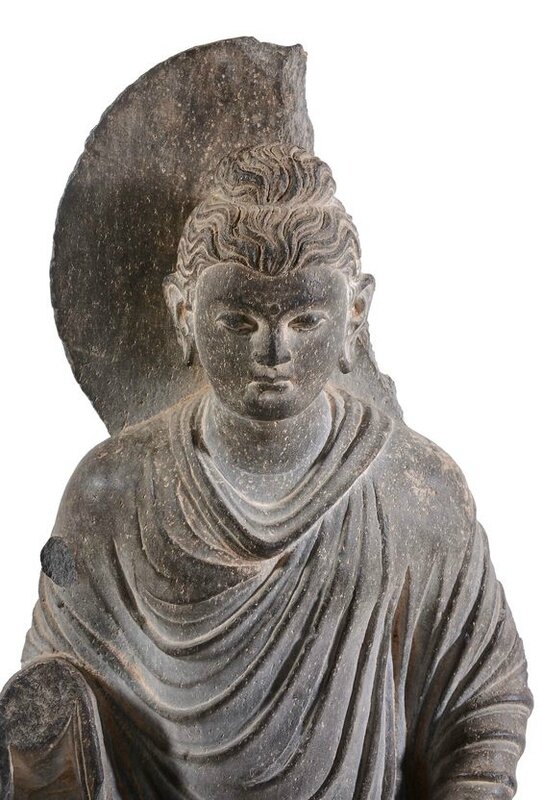




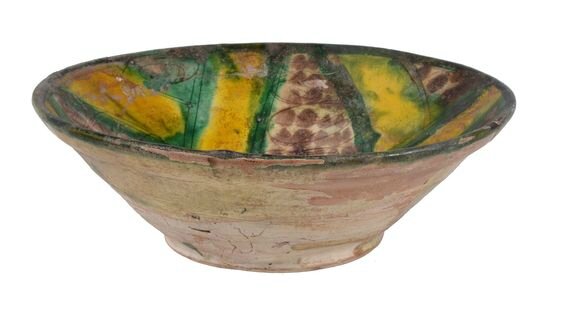




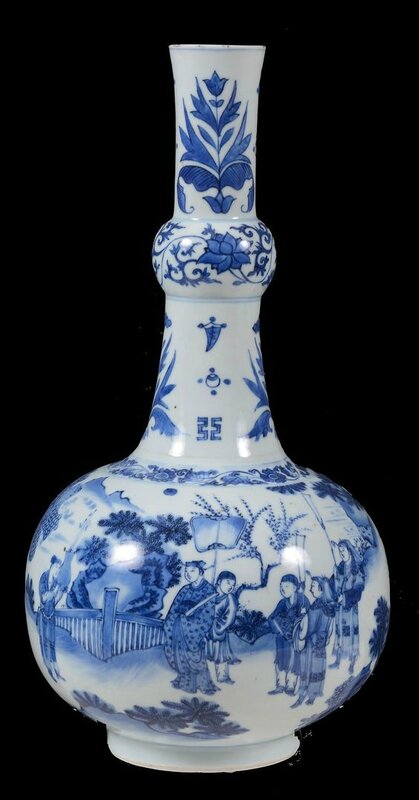


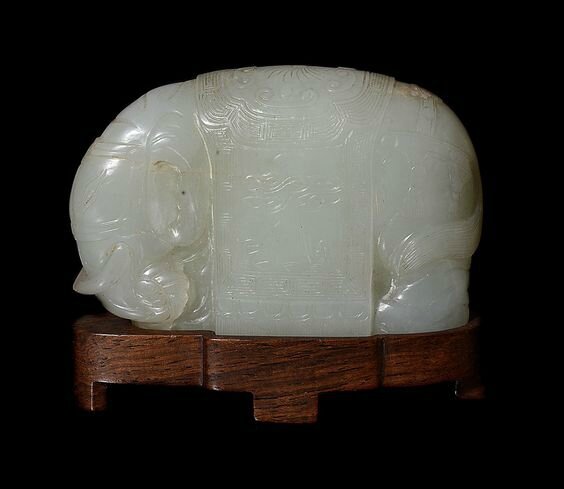
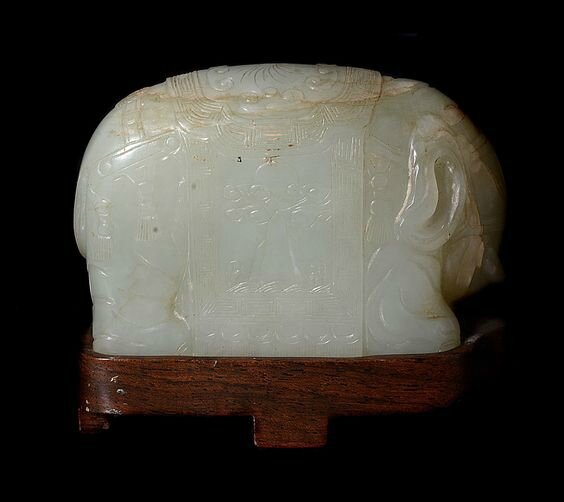









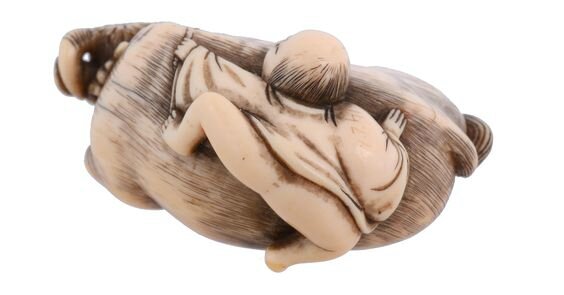

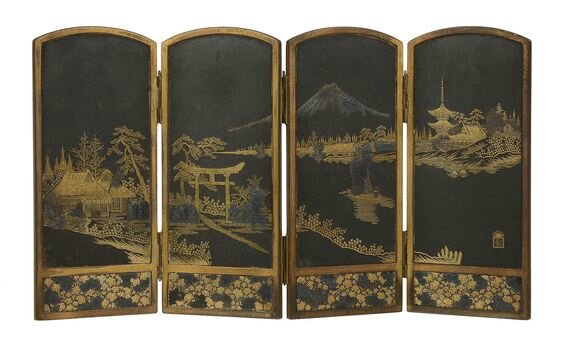



/http%3A%2F%2Fstorage.canalblog.com%2F57%2F78%2F119589%2F129759940_o.jpg)
/http%3A%2F%2Fstorage.canalblog.com%2F76%2F00%2F119589%2F129065442_o.jpg)
/http%3A%2F%2Fstorage.canalblog.com%2F99%2F10%2F119589%2F129064621_o.jpg)
/http%3A%2F%2Fstorage.canalblog.com%2F18%2F84%2F119589%2F129061143_o.jpg)